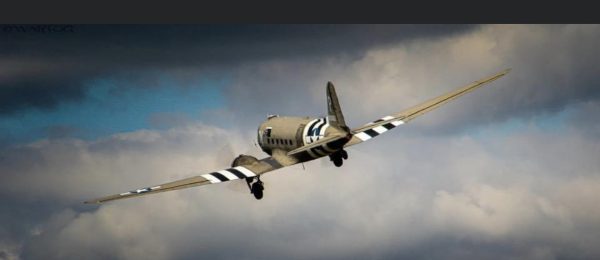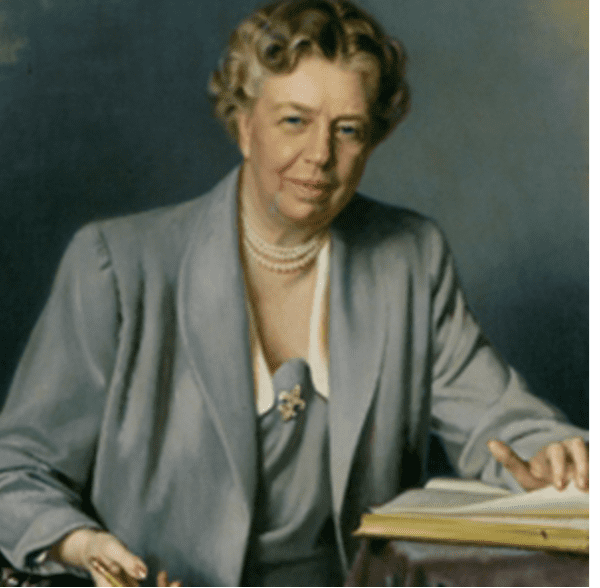From my Desk...
A President’s Day Tribute to Eleanor Roosevelt: How the First Lady Rescued the Navy’s V-5 Pilot Training Program of WWII
One of history’s most unacclaimed contributions to the US war effort during WWII is Eleanor Roosevelt’s behind the scenes rescue of the new physical training program pioneered by the Navy, called V-5 Preflight Training, that used sports, and especially football, to train Navy aviators. The program was first conceived by then Captain, later Admiral, Arthur W. Radford who gave full authority to then Captain. later General, Thomas Hamilton to develop and implement what would become one of the Navy’s most ambitious and revolutionary programs of the war.

Hamilton, a former Navy football player and coach and an ace pilot, was well respected among the rank and file of the Navy, and certainly to both the President and First Lady Eleanor Roosevelt, Hamilton designed the sports curriculum then quickly put it into play at the newly designated V-5 Pre-Flight Training Centers centrally located on four University campuses across the country. UNC-Chapel Hill, University of Georgia, in Athens, Georgia St. Mary’s in Moraga California, and University of Iowa, in Iowa City. As recruits flooded recruiting stations, 800 elite coaches, chosen from 20,000 who applied from around the country, were fast-tracked into the Navy as officers and taught to implement the rigorous training designed to prepare aviators mentally and physically to survive a war time experience. Each Pre-Flight campus also had a varsity, competing sports team which was deemed to be an integral piece to the overall training program. The fierce competition between other universities and colleges was seen to be an important component overall, and each Pre-Flight school quickly assembled a football team. These teams were then inserted into their regions football game calendar.
The idea was not wholly embraced by Navy Brass. One rather vocal critic of the program overall was Admiral Gene Tunney who was not a fan and he and Hamilton were locked in a disagreement over the wisdom of using coaches and sports to train the next generation of pilots. But it was an impromptu lunch with the First Lady that resulted in her being one of the unsung heroes of the V-5 Preflight Training.
Weighing the potential of a transportation crisis he predicted was looming, Admiral Tunney-immediately banned all unnecessary travel utilizing group transport vehicles, thereby shutting down team travel to and from away games for inter-collegiate sports teams. It was a blow to then Captain, now Admiral, Hamilton and what he deemed was a vital part of the program: that of keeping competitive sports alive across the nation to keep up the morale of both the country and the troops, not to mention the recruiting potential that went along with the success of their Pre-Flight teams. Though Captain Hamilton expressed his opinion strongly to his superiors, they were not inclined to agree. The ban was to be adopted that next month.
When Hamilton was asked as a favor to meet with Harry Hopkins, President Roosevelt’s top advisor, he agreed, and their staff quickly arranged for them to meet at the White House, Hamilton was squeezed in between official appointments that day. The meeting was likened to being about one concerned parent meeting with another as Hopkins’ son was interested in becoming a naval aviator pilot, and he wanted to get a briefing of what that would entail from the man who was personally spearheading the program. Hamilton waited for hours outside Hopkins office, one unexpected crisis after another hijacking their meeting. By noon, with still no break in sight, Hamilton was asked if he would be interested in joining Mrs. Roosevelt for lunch. He readily accepted the invitation and joined Mrs. Roosevelt and another guest, a female newspaper columnist, for lunch in the second-floor dining room of the White House.
 Hamilton was charmed by the First Lady’s presence and personality and when asked what his role was in the war effort, willingly gave a brief but enthusiastic explanation of the training he was trying to execute for pilots. When she pointedly asked him if he had had any problems he hadn’t been able to solve, he wondered how prudent it would be to mention the transportation ban given Tunney’s rank. But he hesitated only a moment.
Hamilton was charmed by the First Lady’s presence and personality and when asked what his role was in the war effort, willingly gave a brief but enthusiastic explanation of the training he was trying to execute for pilots. When she pointedly asked him if he had had any problems he hadn’t been able to solve, he wondered how prudent it would be to mention the transportation ban given Tunney’s rank. But he hesitated only a moment.
Hamilton explained in detail to Mrs. Roosevelt the work that had been done to establish football schedules with all the colleges in the country for the Pre-Flight schools, including the Army and Navy service teams. All the colleges had been willing to adjust their schedules and the Pre-Flight programs had top schedules of play slated. It was his conviction that these competitive sports events should be emphasized and kept going during the war years at both the high school and college levels. But, he explained, the sporting events had been specifically targeted by the War Transportation Board with team travel to fand from games prohibited. The ability to keep physical training going in the United States, he told Mrs. Roosevelt, would be severely impacted.
A week later, likely the result of the First Lady’s prodding, an executive order was signed by President Roosevelt clearing all athletic schedules from the restriction. “It was a very notable thing in my mind to have that lovely lady go to bat for us, so to speak,” Hamilton said.
Read more about the V-5 Pre-Flight Training and how football helped win WWII in A Tide of Dreams:The Untold Backstory of Coaches Paul ‘Bear’ Bryant, Carney Laslie and Frank Mosely